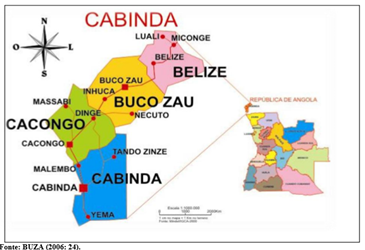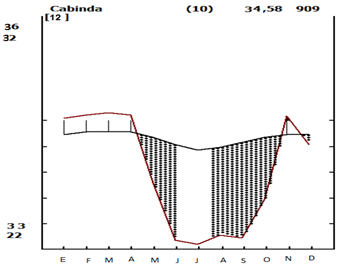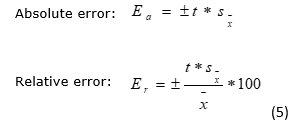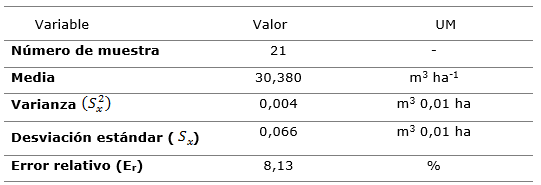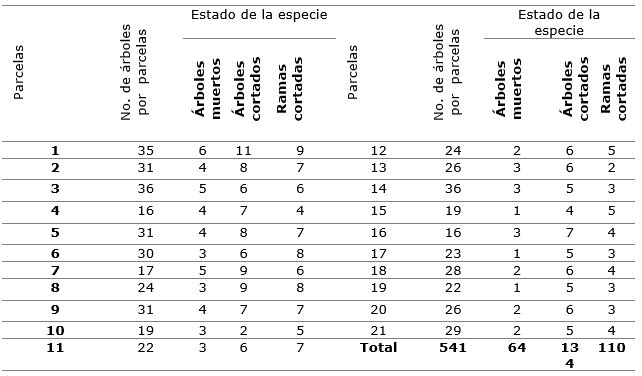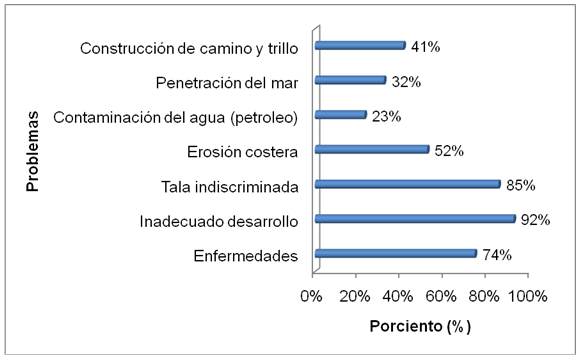My SciELO
Services on Demand
Article
Indicators
-
 Cited by SciELO
Cited by SciELO
Related links
-
 Similars in
SciELO
Similars in
SciELO
Share
Revista Cubana de Ciencias Forestales
On-line version ISSN 2310-3469
Rev cubana ciencias forestales vol.9 no.1 Pinar del Río Jan.-Apr. 2021 Epub Apr 06, 2021
Original article
Current status of Conocarpus erectus L., in the coastal sector of Cacongo, Cabinda province, Angola
1Universidad de Guantánamo. Cuba.
2Universidad de Pinar de Río "Hermanos Saíz Montes de Oca", Facultad de Forestal y Agronomía, Departamento Forestal. Pinar del Río, Cuba.
The research was conducted in the period from November 2018 to November 2019, in the coastal sector Cacongo, Cabinda province, in a coastal protection area of 14 ha, with the objective of characterizing the status of the species Conocarpus erectus. Different dasometric parameters were evaluated: height (m), diameter (cm); basal area (m2) and volume (m3); as well as natural regeneration (incipient, established) and mortality (cut trees, dead trees and cut branches). With community participation, the main environmental problems affecting the species were determined by interviewing 65 people individually for 100 % and an observation guide was applied. The species was planted in the first line of the sea, where it does not adapt, it does not have an adequate development, the dynamics of natural regeneration is incipient with few established plants, with a state of the species in each plot that shows the following behavior: 44 dead trees, 134 cut trees and 110 cut branches. The main problems identified in the mangrove ecosystem were inadequate development (92 %), indiscriminate logging (85 %), diseases (74 %), coastal erosion (52 %), road and threshing construction (41 %), sea penetration (32 %) and water pollution (oil) (23 %).
Key words: Dasometric parameters; Natural regeneration; Main problems and coastal sector.
INTRODUCTION
Mangrove ecosystems are one of the most threatened ecosystems in the world; their existence is even more endangered than that of tropical forests and coral reefs, with a 60 % loss of biodiversity (Marcelo et al., 2018).
Mangrove forests provide different services to humankind, among which are the protection they provide to the coastline against storms and hurricanes, they also stabilize sediments and function as biological filters, they are areas of high landscape value, because they are home to a great biodiversity and function as places for the breeding of fish and invertebrates of commercial importance (FAO 2018).
In spite of the ecological and economic importance of mangroves, their distribution is subject to the balance or development of human communities settled on the coasts, where there is destruction mainly due to urban development, indiscriminate logging, firewood, aquaculture and overexploitation for human consumption of the species found in this ecosystem (Marcelo et al., 2018).
The continuous degradation of natural resources endangers not only terrestrial and aquatic production, but also the penetration of saline water into adjacent agricultural soils, the compaction and desertification of these, causing the deterioration of different ecosystems, in addition to the fact that the salinity curve covers a much larger area compared to previous periods (Graziano 2018).
The Cabinda province, Cacongo coastal sector, does not escape from the problems mentioned above, where there is a transformation of socioeconomic activities and increased pollution of the waters that enter the seas, affecting the species C. erectus, in its dasometric development, and ecological consequences for the conservation of biodiversity in this ecosystem.
Therefore, the objective of this study was to characterize the status of C. erectus in the coastal sector of Cacongo, Cabinda province, Angola.
MATERIALS AND METHODS
Characterization of the study area
The study was conducted in the period between November 2018 to November 2019, in the mangrove ecosystem of the coastal sector Cacongo, Cabinda province (Figure 1), in an area of 14 ha, where its function is protective of the coastline.
Edaphic characterization of the study area
These soils are classified as oxixois, with deep horizon characteristics, red-yellow, with excellent structure and low fertility, they were also described with an A, B, C profile, when they present transition horizons, deep, with a moderately deep brown to yellowish brown A horizon, with color 10 YR 5/8 to 7.6 YR 6/8. The clay can be less than 50 % and the sand fraction acquires high values, which can vary from 30 to 60 %, where fine sand predominates and the apparent density acquires relatively high values, varying between 1.25-1.45 g cm-³, which translates into total porosity values between 60-45 % (FAO, 2006).
The same author explains that the characteristics of the chemical properties show that in the upper horizons the organic content ranges between 2.26-3.86 % and a pronounced decrease with depth, slightly acidic pH between 5.5 - 6.6 and its degree of saturation ranges between 45 to 60 %.
Climatic characterization of the study area
Figure 2 represents the climatic characteristics of the Cabinda municipality, according to the meteorological station, from 2008 to 2019. The average annual temperatures are 34, 58 ºC and the average annual rainfall is 909 mm. The driest months are from April to the second half of October and in the month of December, while from January to the first half of April are rainy and the month of November is the rainiest, above 100 mm. In general, it is characterized by a dry climate.
Data collection
There were 21 plots of 10 m X 10 m (100 m2), separated by 10 m, according to Guzmán and Menéndez. (2013). The method used in the sampling was systematic with plots aligned perpendicularly to the coast, recommended by FAO (1994), cited by Rodríguez (2016), using as variable of interest the volume (V ha-1).
In order to calculate the sample size, it was first necessary to determine the sampling intensity (f) (Equation 1).
f = sampling intensity.
Where:
f |
= fraction or sampling intensity |
n |
= number of units or area sampled |
N |
= number of population units or total area |
As (1-f) > 0.98; the population is infinite and the following formula is used (Equation 2).
Based on the variance (Equation 3).
As a function of the coefficient of variation (Equation 4) .
Where:
t |
= Student's t-distribution for a significance level of 0.05 |
s2 |
= variance |
E |
= error |
cv |
= coefficient of variation |
LE |
= error limit |
The following formulas were used to determine the sampling errors (Equation 5).
Determination of dasometric parameters, natural regeneration and mortality
Measurement variables
All trees in the plots were evaluated by measuring the dasometric variables: height (m), diameter (cm), basal area (m2) and volume (m3) (Equation 6).
Basal area (m2).
Average volume (m3) (Equation 7).
Basal area per hectare (m2 ha-1) (Equation 8).
Volume per hectare (m3 ha-1) (Equation 9).
Regeneration
For the determination of this parameter, the subplot method was used (Guzmán and Menéndez 2013), which consists of erecting 1 m2 (1 x 1 m) plots at the corners and in the center of each 100 m2 plot where the height of all plants present in the plots is measured. The evaluation criteria are as follows:
Incipient: from 0 to 0.50 m.
Established: from 0.50 to 1 m.
Status of the species
To determine this parameter, the status of the species was quantified for each 100 m2 plot (Guzmán and Menéndez, 2013). The evaluation took into account the dead trees, cut trees and cut branches.
Identification of the main environmental problems
The identification of the main problems was developed based on the methodological basis of the Participatory Rural Appraisal (PRA) (Schorhuth and Kievelitz 1994) .
In order to obtain the necessary information, various tools were used, such as: interviews with 65 people, for 100 % of the community, exploratory tours and direct observation of the field Geilfus (1997), to identify the effects on the species C. erectus.
The interviews were conducted with open-ended questions (Annex 1).
Direct field observation and exploratory tours were carried out in order to determine the irregularities of the problems caused by the activities carried out by the inhabitants and their impact on the deterioration of the mangrove forest, the coastal zone, the environment in general, and the community's surroundings (Annex 2).
RESULTS AND DISCUSSION
Sampling intensity
Table 1 shows the sample size calculation that was performed for an error of ±10 % and a probability of 95 %. The variable of interest was the volume per hectare (V ha-1).
(V ha-1), and when the 21 plots of 100 m2 gathered in the pilot sampling were statistically processed, it was determined that they were sufficient, which infers that the sampling carried out is representative.
It can be stated that when determining the relative error, it indicates that the sample size is reliable, with a relative error of 8.13 %, below that proposed, which indicates that the sample is representative for the volume per hectare in the research area.
Behavior of dasometric parameters, natural regeneration and mortality of the species
The dasometric parameters of the species show a height (H) of 4.49 m, diameter (D 1.30) 16 cm, basal area (G) 26.83 m2 ha-1 and volume (V) 6.38 m3 ha-1.
It is of great importance to highlight that this species is located in the first coastal strip, in direct contact with seawater, so there is abundant salt circulation, which does not allow the different dasometric parameters to develop adequately.
Similar results were reached by Pinheiro and Talamoni (2018) when explaining that this species generally inhabits the highest parts and on sandy and less salty soils. In addition, it often develops as shrubs and in favorable places, as trees, with a height of 4 to 7 meters. They also agree with these values Núñez and Ugas (2018) who clarify that the species C. erectus, presents salt-secreting glands, which makes it resistant to these ecosystems, but farther from the sea, and recorded values between 2.56 and 6.97 m in height, in a study conducted in the Unare Lagoon, Venezuela.
These results coincide with Orjuela et al., (2011) when they state that in order for the species C. erectus to give good values in terms of basal area, it is important for it to develop under favorable soil and climatic conditions, so that it can adapt to salinity conditions and nutrient absorption.
Natural regeneration
In the case of natural regeneration (Table 2), it is observed that there is not an adequate recovery of the species C. erectus, because it does not manage to establish itself in its totality, due to the edaphoclimatic conditions that affect its germinative development and because it is in the first strip of the sea, with high salinization.
This number of individuals of small diameters and low height, characterize the structure of the ecosystem in this area, with a dynamic of little regeneration and growth, with few plants due to the adaptability and the edaphic conditions and salty water.
Similar results were reached by Moreno and Infante (2016), explaining that this species of mangrove, C. erectus, lives further inland, in the highest and sandiest part of the mangrove. Therefore, it is the one that is most felled, to extend the cattle lands and is always associated with the other species, but where there is low tidal influence.
In order to reach an ecological balance in these ecosystems, it is important to take into account the aspects of adaptability, with the objective of a future recovery of the mangrove species. In this regard, Reyes and Tovilla (2002) explain that where the flood level is permanent, the survival of Rhiphozora mangle L. plants is assured, while C. erectus does not have an adequate development.
The rehabilitation of mangroves through natural regeneration is relatively inexpensive and its management requires little work. Walters et al. (2008), who make it clear that it leads to better root development in the early stages and causes less disturbance to the soil, report similar results. Vargas (2015) and Rodríguez et al., (2018) also recognize the importance of natural regeneration, which allows plant species to remain over time.
Similar results were reported by Rodríguez et al., (2014), in a mangrove forest of the coastal sector Cortés, in Pinar de Rio. They affirm that the behavior of natural regeneration is good and the quality of plants is evidenced when conditions are favorable for their morphological and physiological development.
These results are also agreed with by Sánchez (2017) and Ravelo and Pérez (2018) in explaining that C. erectus seeds are recalcitrant. Therefore they cannot be stored at low temperatures; they can lose viability quickly, which is why they must be sown immediately, also making it clear that regeneration can have many causes: lack of seed trees, irregular seed production, high rates of seed predation, low germination rates and also, insufficient light.
Status of the species
Table 3 shows the status of the species by plot, with a total of 541 trees, including 64 dead trees, 134 cut trees and 110 cut branches due to human action.
These results show that the number of dead trees is because this species does not adapt to the edaphoclimatic conditions, since it develops adequately in areas of low salinization, a condition that was not taken into account at the time of planting.
Regarding the amount of dead trees, cut trees and cut branches, Chargoy and Hernández (2002) and González et al., (2016) agree, reporting that there are also other problems that affect the mangrove forest, such as the inappropriate use of forest and fishery resources, in addition to that, there are illegal exploitation of forest resources and soil extraction.
Main problems identified
Figure 3 shows the main problems identified in the mangrove forest and in the C. erectus species: inadequate development (92 %), indiscriminate logging (85 %), diseases (74 %), coastal erosion (52 %), road construction (41 %), sea penetration (32 %) and water pollution (oil) (23 %).
Rodríguez et al., (2014) when performing a comprehensive analysis of all the problems obtain similar results. They explain that the reported problems that damage the mangrove forest are soil deterioration and indiscriminate logging, in addition to coastal erosion and desertification.
In order to manage this ecosystem in a rational way, it is necessary to achieve a precise work in the area, with people in order to achieve an adequate development and to know how to conserve the different resources that exist. With these results, Marcelo et al., (2018) agree when they state that the mangrove ecosystem is one of the most subject to deterioration, due to the irrational use of its resources, beyond its recovery capacity; in addition, the polluting waste from industries also affects the feeding and reproduction of aquatic life, both plants, insects and fish.
CONCLUSIONS
The average dasometric parameters in the different variables show that there is not a good development of the species Conocarpus erectus. The species Conocarpus erectus has a dynamic of little natural regeneration and low increments, as it is located in the first strip of the sea. Anthropic actions that affect the development of the species Conocarpus erectus were identified in the ecosystem.
ANNEXES
Annex 1. Individual interview guide.
1. What type of fuel is used in your home for cooking?
2. In the case of using firewood from the Mangrove, it is through:
___Cuts healthy standing trees. ____Cuts dead or diseased standing trees ___Waste from fallen branches and trunks. ____Others.
3. Do you know the mangrove?
4. Do you attribute any importance to it?
5. If the above answer is affirmative, please answer:
____Provides firewood and charcoal. _____To catch crabs. _____ To castrate honeys _____ To hunt hutias. _____ To harvest oysters. _____ Hunting _____Sowing rice.
6. The capture of fish and crustaceans is generally done in:
____The platform ____Open sea____ In the mangrove.
7. Of the capture species, which of them do you know that inhabit the coastline for some time?
8. Do you know if the mangrove influences fishing yields?
Yes _____ No_____
If the answer above is yes, please explain why.
9. Have you observed any changes in the presence of underwater weeds on the beaches or near the coast?
Yes _____ No _____
10. Do you know if any of the following are discharged into the sea?
_____ Oil from ships. _____ Solid or liquid waste from industry_____ Construction waste_____ Sewage_____ Other.
11. Have you noticed any significant changes in:
____ tide levels? ____ coastal vegetation? ____ temperature?
____ soil? ___ coastline? ____ the salinity of the coastal waters?
12. Do you attribute any importance to mangroves?
Yes ____ No ____
For being:
____ Coastal protector ____ For catching crabs. ____ For fishing. ____ To cut firewood ____ To hunt. ____ To castrate honeys.
13. How do you consider their current condition?
____ Bad ____ Fair ____ Good ____ Good
14. Is there any prohibition by the Institute of Forestry Development (IDF) and Environment to use mangrove firewood?
15. Have there been any environmental training activities in the community?
Annex 2. Observation guide.
The purpose of the observation is to verify in the field the regularities that occur in the management of coastal ecosystems by the inhabitants and the impact of these activities on the deterioration of the environment, in the mangrove forest and in general.
It is carried out in coordination with the community and the direct participation of the inhabitants, collecting the most relevant objective evidence that reflects the current state of the coastal zone.
Aspects to keep in mind during field observation
Coordinate with the villagers the selection of sites to be visited, as well as the routes to travel to the area.
Evaluate the percentage (%) of the area affected by anthropogenic action and the management techniques used.
Determine the natural components that are affected by inappropriate use.
Identify the environmental problems generated by mangrove overexploitation and describe them: erosion, deforestation, desertification, and others.
The observations will be registered with digital photographs as real evidence of the observed objects.
REFERENCIAS BIBLIOGRÁFICAS
CHARGOY, M.A.R. y HERNÁNDEZ, C.T., 2002. Restauración de áreas alteradas de manglar con Rhizophora mangle en la Costa de Chiapas. Revista Madera y Bosques [en línea], vol. 8, pp. 103-114. [Consulta: 14/10/2020]. ISSN 2448-7597. DOI 10.21829/myb.2002.801294. Disponible en: Disponible en: https://myb.ojs.inecol.mx/index.php/myb/article/view/1294 . [ Links ]
FAO. 2006. World Reference Base: Mapa Mundial de Suelos, escala 1: 30 000 000. S.l.: FAO, EC, ISRIC. [ Links ]
FAO. 2018. El estado de los bosques del mundo - Las vías forestales hacia el desarrollo sostenible. Roma: FAO. [ Links ]
GEILFUS, F., 1997. 80 herramientas para el desarrollo participativo: diagnóstico, planificación, monitoreo, evaluación [en línea]. S.l.: IICA. Disponible en: https://books.google.com.cu/books/about/80_herramientas_para_el_desarrollo_parti.html?hl=es&id=jVTUkFstuIIC&redir_esc=y. [ Links ]
GONZÁLEZ-HERNÁNDEZ, L., SOL-SÁNCHEZ, Á., PÉREZ-VÁZQUEZ, A., OBRADOR-OLAN, J.J., GONZÁLEZ-HERNÁNDEZ, L., SOL-SÁNCHEZ, Á., PÉREZ-VÁZQUEZ, A. y OBRADOR-OLAN, J.J., 2016. Sobrevivencia y crecimiento de mangle negro (Avicennia germinans L.) en plantaciones reforestadas y regeneración natural. Revista mexicana de ciencias agrícolas [en línea], vol. 7, no. SPE14, pp. 2769-2782. [Consulta: 14/10/2020]. ISSN 2007-0934. Disponible en: Disponible en: http://www.scielo.org.mx/scielo.php?script=sci_abstract&pid=S2007-09342016001002769&lng=es&nrm=iso&tlng=es . [ Links ]
GRAZIANO, J., 2018. Las vías forestales hacia el desarrollo sostenible de los bosques del mundo. FAO (Organización de las Naciones Unidas para la Alimentación y la Agricultura), ISSN 1020-5721. [ Links ]
GUZMÁN, J.M. y MENÉNDEZ, L., 2013. Protocolo para el monitoreo del ecosistema de manglar [en línea]. La Habana: Proyecto GEF/PNUD. ISBN 978-959-287-042-0. Disponible en: https://www.cifor.org/publications/pdf_files/WPapers/WP117Kauffman.pdf. [ Links ]
MARCELO, A., PINHEIRO, A. y CAROLINA, A. 2018. Educação Ambiental sobre Manguezais. 1ª Edição. Universidade Estadual Paulista "Júlio de Mesquita Filho" (UNESP) Instituto de Biociências (IB), Câmpus do Litoral Paulista (CLP): Brasil. ISBN: 978-85-61498-08-5, pp. 165. Disponible en: https://www.clp.unesp.br/Home/publicacoes/educacao-ambiental-sobre-manguezais.pdf [ Links ]
MORENO, P. y INFANTE, D., 2016. Conociendo los Manglares, las Selvas Inundables y los Humedales Herbáceos [en línea]. Primera edición. Disponible en: http://www.inecol.mx/inecol/libros/Conociendo_los_manglares,_ as_selvas_ pdf. [ Links ]
NÚÑEZ, F. y UGAS, M. 2018. Caracterización ûsionómica del manglar de Avicennia germinans y Conocarpus erectus emplazado en la Laguna de Unare, Venezuela Terra Nueva Etapa, vol. 34, núm. 55, ISSN: 1012-7089, Universidad Central de Venezuela, Venezuela, pp. 21. Disponible en: http://www.redalyc.org/articulo.oa?id=72156172015. [ Links ]
ORJUELA-ROJAS, A.M., VILLAMIL, C.A. y SANJUAN-MUÑOZ, A., 2011. Extensión and structure of mangrove forests in the baja guajira, colombian caribbean. Boletín de Investigaciones Marinas y Costeras - INVEMAR [en línea], vol. 40, no. 2, pp. 381-399. [Consulta: 14/10/2020]. ISSN 0122-9761. Disponible en: Disponible en: http://www.scielo.org.co/scielo.php?script=sci_abstract&pid=S0122 -97612011000200009&lng=en&nrm=iso&tlng=es . [ Links ]
PINHEIRO, M. y TALAMONI, A., 2018. Educação ambiental sobre Manguezais. Ia Edição São Vicente [en línea]. S.l.: Universidade Estadual Paulista "Júlio de Mesquita Filho" (UNESP) Instituto de Biociências (IB), Câmpus do Litoral Paulista (CLP). ISBN 978-85-61498-08-5. Disponible en: https://www.clp.unesp.br/Home/publicacoes/educacao-ambiental-sobre-manguezais.pdf. [ Links ]
RAVELO, F.N. y PÉREZ, M.U., 2018. Caracterización fisionómica del manglar de Avicennia germinans y Conocarpus erectus emplazado en la Laguna de Unare, Venezuela. Terra. Nueva Etapa [en línea], vol.34, no. 55, pp. 193-218. [Consulta: 14/10/2020]. ISSN 1012-7089, Disponible en: Disponible en: https://www.redalyc.org/articulo.oa?id=72156172015 . [ Links ]
REYES, M. A. y TOVILLA, C., 2002. Restauración de áreas alteradas de manglar con Rhizophora mangle en la Costa de Chiapas. Revista Madera y Bosques, Vol. 8 Número especial 1. ISSN: 1405-0471, pp.103-114. Disponible en: https://www.redalyc.org/pdf/617/61709806.pdf [ Links ]
RODRÍGUEZ, O.L., 2016. Estado actual del bosque de manglar en el lote 2 de la Reserva Ecológica Baitiquirí, Guantánamo. Revista Cubana de Ciencias Forestales [en línea], vol. 4, no. 2, pp. 207-219. [Consulta: 14/10/2020]. ISSN 2310-3469. Disponible en: Disponible en: http://cfores.upr.edu.cu/index.php/cfores/article/view/203 . [ Links ]
RODRÍGUEZ, O., FALCÓN, E., FERNÁNDEZ, M.C., RODRÍGUEZ, E. y ROMERO, C.V., 2014. Estado actual del bosque de manglar en el sector costero Caimanera. Revista electrónica «Hombre, Ciencia Tecnología», vol. 34, no. 71, pp. 10-25. ISSN 1028-0871. Disponible en: https://dialnet.unirioja.es/descarga/articulo/5768628.pdf [ Links ]
RODRÍGUEZ, O.L., et al., 2018. Propuesta de acciones para recuperar el bosque de manglar en la bahía de Guantánamo, Cuba. Revista Cubana de Ciencias Forestales [en línea], vol. 6, no. 2, pp. 224-239. [Consulta: 14/10/2020]. ISSN 2310-3469. Disponible en: Disponible en: http://cfores.upr.edu.cu/index.php/cfores/article/view/336 . [ Links ]
SÁNCHEZ, J., 2017. Conocarpus erectus L. [en línea]. 2017. S.l.: PlanFor.es. Disponible en: http://www.arbolesornamentales.es. [ Links ]
SCHORHUTH, M. y KIEVELITZ, U., 1994. Diagnóstico Rural Rápido Participativo. Métodos de Diagnóstico y Planificación en la Cooperación al Desarrollo. S.l.: Gesellschaftfur Technische Zusammenarbeit. GTZ. GmbH. [ Links ]
VARGAS-FONSECA, E., 2015. Capacidad de regeneración natural del bosque de manglar del Estero Tortuga, Osa, Puntarenas, Costa Rica. Rev. biol. trop [en línea], pp. 209-218. [Consulta: 14/10/2020]. Disponible en: Disponible en: http://www.scielo.sa.cr/scielo.php?script=sci_arttext&pid=S0034-77442015000500209 . [ Links ]
WALTERS, B.B., RÖNNBÄCK, P., KOVACS, J.M., CRONA, B., HUSSAIN, S.A., BADOLA, R., PRIMAVERA, J.H., BARBIER, E. y DAHDOUH-GUEBAS, F., 2008. Ethnobiology, socio-economics and management of mangrove forests: A review. Aquatic Botany [en línea], vol. 89, no. 2, pp. 220-236. [Consulta: 14/10/2020]. ISSN 0304-3770. DOI 10.1016/j.aquabot.2008.02.009. Disponible en: Disponible en: http://www.sciencedirect.com/science/article/pii/S0304377008000417 . [ Links ]
Received: October 09, 2020; Accepted: January 24, 2021











 text in
text in 

